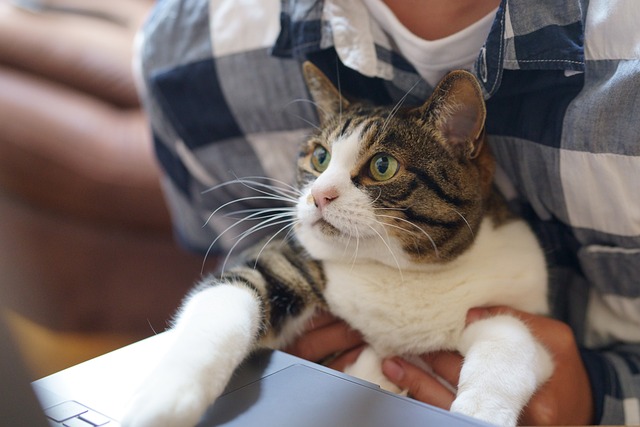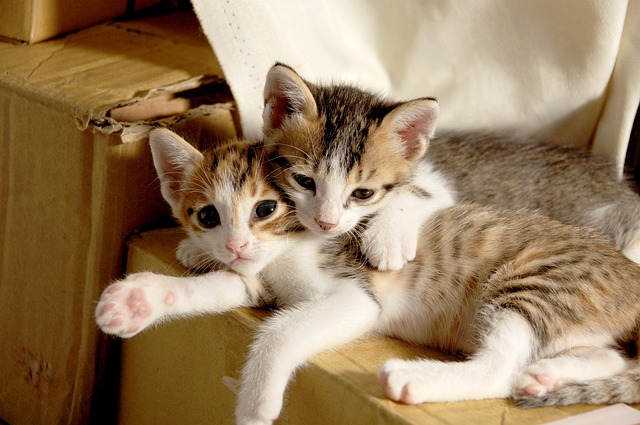Using a clicker for cat training reinforces positive behaviour and enhances communication between you and your feline companion. The distinct sound of the clicker marks the desired action, making it easier for your cat to understand and learn.
By incorporating a clicker into your training routine, you can effectively teach your cat new behaviours and tricks while strengthening your bond. This is simple, yet powerful tool can be a game-changer in shaping your cat’s behaviour and improving their overall well-being.
Whether you’re teaching basic commands or more advanced tricks, a clicker can be a valuable asset in your training arsenal.
Clicker Training For Cats: A Modern Approach
The Basics Of Clicker Training
Clicker training involves using a small device that emits a distinct sound to reinforce positive behaviours in cats.
Advantages Over Traditional Methods
- Precise: Clicker offers precise timing for marking desired behaviours.
- Clear Communication: Cats quickly associate the click sound with a reward.
- Positive Reinforcement: Encourages positive behaviour without punishment.
- Engaging: Makes training sessions more engaging and interactive for cats.
Demystifying The Clicker’s Magic
How The Clicker Works With A Cat’s Psychology

The clicker provides a clear and consistent signal to your cat that they have performed the desired behaviour. This instant feedback helps your cat understand exactly which action is being rewarded. The clicker’s sharp sound cuts through distractions, making it an effective tool for training cats of all ages.
The Science Behind Positive Reinforcement

Positive reinforcement is a well-established method for shaping animal behaviour, including cats. When a cat associates a specific behaviour with a reward, such as a treat or praise, they are more likely to repeat that behaviour. The clicker acts as a bridge between the desired behaviour and the reward, creating a powerful connection in the cat’s mind.
Choosing The Right Clicker
Choosing the right clicker is crucial when it comes to cat training. A clicker is a helpful tool in training your feline friend as it creates a distinct sound that your cat associates with positive reinforcement, making it easier to communicate with your pet and teach them new behaviours.
Types Of Clickers And Their Features

Deciding the appropriate clicker is crucial for effective cat training. There are various types of clickers available, each with unique features to consider.
What To Look For In A Quality Clicker

When selecting a clicker, consider factors such as sound volume, durability, and ease of use. Opt for a clicker that emits a distinct and consistent sound. Look for a clicker that is sturdy and can withstand daily use. Ensure the clicker has a comfortable grip for ease of handling during training sessions.
- Decide a clicker with an adjustable volume to suit your cat’s sensitivity.
- Look for a clicker that is lightweight and portable for convenience.
- Consider a clicker with a wrist strap for easy carrying during training sessions.
| Types of Clickers | Features |
|---|---|
| Traditional Clicker | Produces a distinct clicking sound |
| Button Clicker | Operates with a simple button press |
| Clicker with Volume Control | Allows adjustment of sound level |
When selecting a clicker for cat training, prioritise functionality and durability. Ensure the clicker fits comfortably in your hand and emits a clear, consistent sound. By deciding on the right clicker, you can enhance the effectiveness of your cat training sessions.
Getting Started With Clicker Training
Getting started with clicker training is an exciting and effective way to teach your cat new behaviours and reinforce positive actions. The use of a clicker in cat training provides a clear and consistent way to communicate with your feline friend, making it easier for them to understand what you want them to do. In this section, we’ll cover the first steps and basic commands for clicker training, as well as how to set up a training schedule for optimal results.
First Steps And Basic Commands
When beginning clicker training with your cat, it’s essential to start in a quiet, familiar environment to minimize distractions. Begin by introducing your cat to the clicker, associating the sound with a tasty treat. Hold the clicker in one hand and a treat in the other, then press the clicker and immediately give your cat a treat. Repeat this process several times until your cat begins to show interest in the clicker sound.
- Teach your cat to associate the clicker sound with positive reinforcement by clicking and rewarding them when they exhibit a desired behaviour, such as sitting or coming when called.
- Use the clicker to capture the precise moment your cat performs the desired action, making it clear to them what behaviour is being rewarded.
- Introduce basic commands like “sit” and “come” by clicking and rewarding your cat when they naturally exhibit these behaviours, gradually adding verbal cues as they begin to understand the association.
Setting Up A Training Schedule
Consistency is key when it comes to clicker training, so establishing a regular training schedule is crucial for success. Choose a time of day when your cat is most alert and receptive, such as after a meal or playtime. Keep training sessions short, around 5–10 minutes, to maintain your cat’s interest and prevent them from becoming overwhelmed.
- Plan for multiple short training sessions throughout the day, rather than one long session, to reinforce learning and prevent fatigue.
- Be patient and positive during training, rewarding even small steps towards the desired behaviour to encourage progress.
- Gradually increase the complexity of commands and behaviours as your cat becomes more proficient, always using the clicker to mark and reinforce their actions.
Mastering The Click: Timing And Consistency
Cat training can be a rewarding experience for both pet and owner, and a clicker can be an invaluable tool in this process. Mastering the click involves perfecting the timing and maintaining consistency, which are crucial aspects of effective clicker training for cats.
The Importance Of Timing In Clicker Training
Timing is everything when it comes to clicker training for cats. The click must occur the instant your cat performs the desired behaviour. This immediate reinforcement helps your cat understand which action is being rewarded. If the click is mistimed, your cat may become confused and the training process can be less effective.
Maintaining Consistency For Faster Learning
Consistency is key to successful clicker training. It’s important to use the clicker consistently, ensuring that each click is followed by a reward. This helps your cat understand the association between the click and the positive reinforcement, leading to faster learning and behaviour modification.
Troubleshooting Common Challenges
Dealing With Distracted Cats
- Use high-value treats to maintain focus.
- Minimize distractions in the training environment.
- Keep training sessions short to prevent boredom.
Phasing Out The Clicker
- Gradually reduce the frequency of clicks.
- Replace clicks with verbal cues or hand signals.
- Reward desired behaviour even without the clicker.
Advanced Clicker Training Techniques
Advanced clicker training techniques can take your cat training to the next level, allowing you to teach complex behaviours and modify unwanted behaviours effectively. These advanced techniques leverage the power of clicker training to communicate with your cat and shape their behaviour in a positive and rewarding way.
Teaching Complex Behaviours
Clicker training provides an effective way to teach cats complex behaviours such as retrieving objects, jumping through hoops, or even performing agility courses. By breaking down these behaviours into small, achievable steps and using the clicker to mark desired actions, you can gradually shape and reinforce the behaviour you want to teach.
Using Clicker Training For Behaviour Modification
Clicker training can also be utilized for behaviour modification, helping to address issues such as aggression, fearfulness, or destructive behaviours. By pairing the clicker with positive reinforcement, you can redirect your cat’s behaviour towards more desirable actions, effectively replacing unwanted behaviours with more appropriate ones.
The Joy Of Clicker Training: Bonding And Beyond
The Joy of Clicker Training: Bonding and Beyond
Clicker training for cats is a fantastic way to strengthen your bond with your feline friend while also achieving positive behaviour outcomes. By incorporating a clicker into your training routine, you can create a deeper connection with your cat that goes beyond basic commands.
Strengthening Your Bond Through Training
Clicker training allows you to communicate with your cat in a clear and consistent manner, building trust and understanding between you and your pet.
Unexpected Benefits Of Clicker Training
- Improves communication
- Enhances mental stimulation
- Reduces anxiety and stress
- Strengthens the human-cat bond
Frequently Asked Questions
What’s The Point Of Clicker Training?
Clicker training is a positive reinforcement method for teaching animals desired behaviours. It helps establish clear communication and strengthens the bond between the trainer and the animal. This training is effective for various species and can be used for obedience, tricks, and behaviour modification.
What Age To Start Clicker Training For A Cat?
Start clicker training for a cat at any age, but younger cats tend to learn quicker. It’s never too late to begin training!
Can You Use A Clicker For Bad Behaviour In Cats?
Using a clicker for bad behaviour in cats can be effective by associating the sound with positive reinforcement.
When Should You Use A Clicker?
A clicker should be used for training when you want to mark a specific behaviour. It helps to communicate to your pet that they have performed the desired action. Use a clicker to reinforce positive behaviour during training sessions.
Using a clicker for cat training can be an effective and efficient way to communicate with your feline friend. By providing clear signals and positive reinforcement, clicker training can help strengthen the bond between you and your cat while promoting good behaviour.
Embracing this method can lead to a harmonious and fulfilling relationship with your pet.
